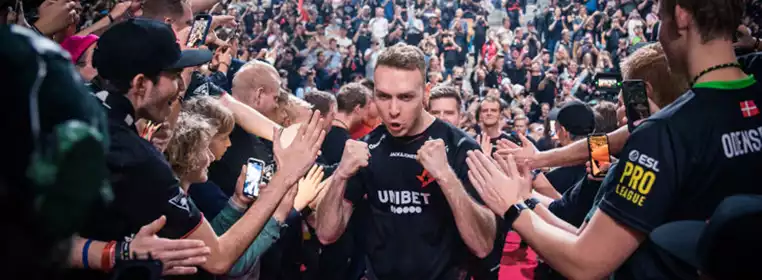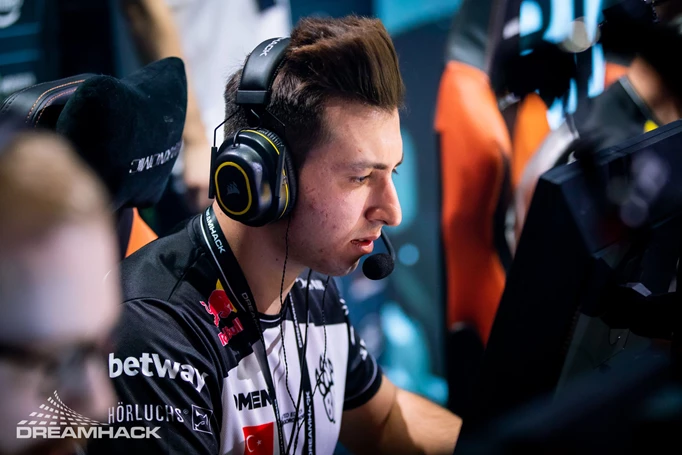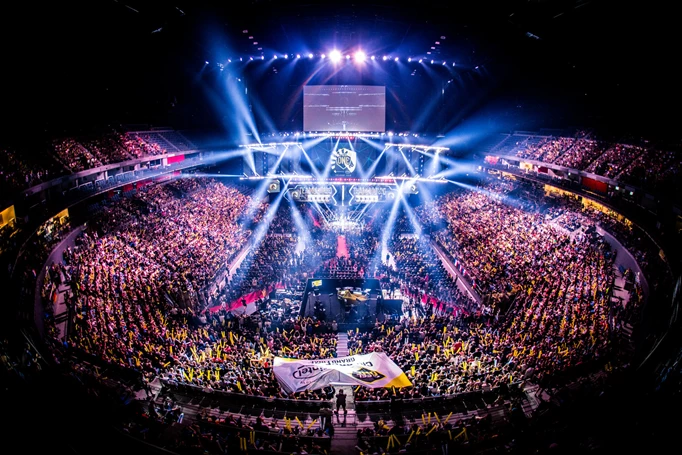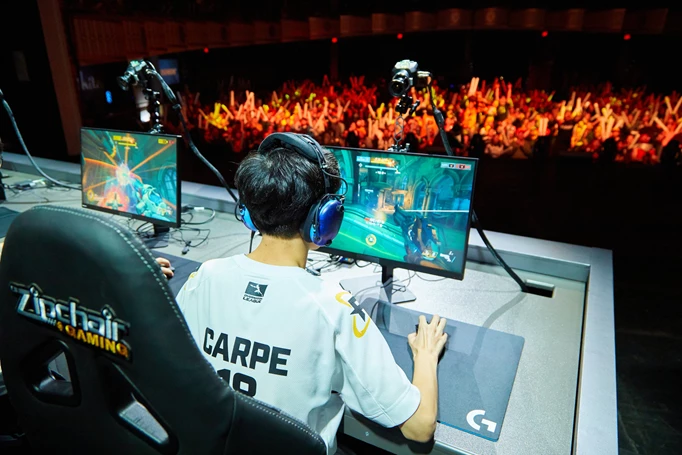Stuchiu: The viability of 6-Man Rosters in CS:GO

Astralis are moving to a six-man roster as they added Patrick “es3tag” Hansen to their lineup. The move itself has sparked discussion on the positives and negatives for CS:GO. Both sides have their adherents and detractors. Proponents of the move call it a natural evolution of the sport with comparisons to League of Legends or Overwatch while detractors point out potential problems of having a six-man roster in the context of CS:GO. I fall somewhere closer in the middle as it depends on the specific case we’re talking about. I’ll go in-depth on the potential positives, negatives, and the Astralis move in specific.
Positives of a Six Man Roster
The positives of a six-man roster are obvious from a competitive and managerial standpoint. If resources (money, staff, infrastructure, etc.) is no object, then a six-man roster has a bevy of potential advantages. By having six players, you can potentially lessen the impact individual form has over a protracted period of time.
For instance, in the latter half of Markus “Kjaerbye” Kjaerbye’s time on Astralis, his personal form slumped as he stopped impactful as an entry-fragger. If Astralis had someone like Kristian “k0nfig” Wienecke as a sixth man, they could have subbed him in and gained an immediate boost in firepower during that time period.
A second potential advantage is anti-stratting. It is much harder to anti-strat a team when there is little data about them and swapping a player in and out can make it that much harder to scout. While not a direct correlation, it is similar to when teams bring in a stand-in and the stand-in makes it much harder for opponents to deal with it as they add a new dimension to the squad. We saw this when Dennis “dennis” Edman subbed in for Astralis at BLAST Copenhagen 2017 and Astralis got to the finals of the tournament.
A third potential advantage is map pools. Players often have specific signature styles that make them well suited for one map, but badly suited for another. So if you have a six-man roster that has disparate types of players, a team could theoretically have map specialists. BIG seemed to be going this way at the end of 2018 after they signed Can “XANTARES” Dortkardes. At the time, they had a potential rotation between XANTARES, Owen “smooya” Butterfield, and Johannes “nex” Maget. If they could have controlled that team, XANTARES could have been their cache specialist, Smooya their AWP specialist (for maps like Train or Dust2), and nex could have come in if they wanted to run a five rifle style.
A final positive is from the managerial perspective. If you have six players it adds a way to motivate/punish players who stop practising as the team can bench them and have someone else play instead. Outside of motivation, it could potentially help deal with burnout as someone can take a break and have someone else play for them in the interim.

 Click to enlarge
Click to enlargeThe Negatives of running a Six-Man Roster
There are potential negatives to running a six-man roster as well. Back in 2002-2003, there was a North American lineup called 3D that had run a six-man rotation. Ognian "steel" Gueorguiev did an interview with Duncan “Thorin” Shields where he reflected on his competitive career during that time.
There are three snippets that are noteworthy when talking about six-man rosters. The first is when steel talks about how they decided who got to play, “
3d tried this “Of course it was frustrating to sit out the whole WCG and be forced to form another team for just one event, but it didn't make me insecure about my position on 3D, “It was agreed upon as a team, unless someone volunteered to sit out a map. There were some players who were invaluable on some maps, say Ksharp awping on train for example. As far as I recall, it was loosely based on performance and sometimes just picking the short straw!”
The second is when he talks about watching the finals watching from the side, “It was a disappointment to have to sit out the map, but it was chosen by short straw as obviously no one would volunteer to sit out the championship map...When you are behind the team watching it unfold, the stress really takes over and on top of that you feel powerless when the going is rough.”
The final bit is when he talks about what the strengths of the 3D lineup were, “The real strength of that 3D line-up is none of our players were stuck to a very specific playstyle. All our players could be first inside the bombsite for the first kill, and all were skilled riflers.”
This interview gives us a good background into the potential problems of running a six-man roster. First is the actual system of deciding who gets to play what map. Without a strong tactical system or leadership, the entire team is likely to break down. 3D got around this by doing a combination of performance and luck. What’s more, the entire 3D team bought into the idea as it was self-imposed rather than imposed from the top-down. Modern teams will have a much harder time trying to convince players to use a six-man rotation.
The second thing worth noting is the emotional problems that can cause. Emotional volatility is already one of the biggest factors when it comes to destroying teams. Even when teams do well, they are liable to kick out players if things aren’t going well outside of the server. This is what caused the Fnatic schism back in 2016 and more recently caused BIG to implode in early 2019. If a player were to consistently sit out of the big matches, that could cause huge internal problems down the line and may destroy a lineup faster than if they had stuck with a five-man lineup.
The final thing to consider is the strengths of the 3D lineup. Steel described them as fairly versatile, high-skilled players. This is important to consider as the makeup of the skills needed to make a six man roster work at a highest level may be different from a normal five-man roster. Perhaps it requires a group of skilled and versatile players like Liquid to really make work so that the tactics and teamplay aspects of the lineup don’t suffer as much.

 Click to enlarge
Click to enlargeOther Negatives to Consider
There are three other potential negatives to consider. The first is ring rust, the phenomena where players and teams play far worse after a prolonged break. This is something we’ve seen time and time again throughout CS:GO history. When LG/SK were the best team in the world, they consistently slumped right after coming off the player break and had to play back into their top form throughout the season.
In more recent times, we’ve seen a team like Liquid never regain their former glory. In mid-2019 they speed-ran the IEM Grand Slam and were unstoppable. Since coming back from that break, they’ve been good, but have never been close to the same heights.
The most important example for this particular argument is Astralis. Many consider Astralis to be the most professional team when it comes to practice. They consistently take events off and use that time to rebuild and innovate their strategies and tactics. Their current lineup is: Lukas “gla1ve” Rossander, Emil “Magisk” Reif, Andreas “Xyp9x” Hojsleth, Peter “dupreeh” Rasmussen, and Nicolai “dev1ce” Reedtz. This lineup is the greatest lineup to ever play CS:GO. The previous lineup with Kjaerbye is among the best lineups in the game's history as well.
Among all the teams in history, Astralis are the best equipped to deal with and take advantage of extended player breaks. However, the last few years has shown that despite being the most professional, tactical, and prepared team in history, they are still susceptible to ring-rust. In 2017, there was a break between ECS Season 3 Finals and the PGL Krakow. Astralis got top four at Krakow, but then had a dip in form as Gambit beat them at DreamHack Malmo 2017 and Astralis lost in the group stages of ESL New York.
Their next break was at the end of the year where they attended ELeague Boston and bombed the Major in 12-14th place. There were more reasons for their loss here as dev1ce had been injured at the end of 2017 and the team decided to switch roles before going into the event. The next break was after ELeague Premier 2018. By this time, Astralis had their GOAT lineup and were unaffected by the break. North pulled a miracle victory at DreamHack Stockholm 2018, but Astralis still went on to win the Major.
There was another break at the beginning of 2019, which didn’t affect Astralis either. They got 2nd at IBUYPOWER Masters (which was a LAN with huge tournament issues) and then won the IEM Katowice Major. At this point though, Astralis themselves went on an extended break as they attended only two BLAST Lans in the next three months after the Major.
The decision ended their era and by the time Astralis came back, they lost to FURIA and Liquid at ECS Season 7 Finals and EPL 9 Finals respectively. In the end, Astralis got it back together and won the StarLadder Berlin Major after the August break.
Finally we come to 2020. There was an extended break at the beginning of the year and when Astralis came back, they bombed out of the BLAST group stages and then got top four at IEM World Championship. In total, Astralis have gone through about 7 different player breaks in their last two lineups. Among them, they were adversely affected three to four times (whether or not you count the time they were coming off the break where dev1ce was injured beforehand and they had to play with stand-ins). Those times include the mid-2017 break with the Kjaerbye lineup, the self-imposed break in 2019, and the player break in 2020. The other three times, they were able to ignore the ring rust. Astralis, the greatest lineup ever assembled and equipped with the tools best to deal with ring rust are only 50/50 against it.
Ring rust is just the prolonged version of someone who hasn’t properly warmed up. So when Sean Gares tweets about not having a warmed up player, it isn’t a minor concern, but a legitimate issue that has real bearing on competitive success.
A knock-on effect of using a sixth player is that you get less real-world experimentation. Teams that experiment too much with a six-man rotation will have a harder time pinning down intangible problems. While they will likely get a boost when it comes to firepower (as steel pointed out in the 3D example, you can switch out players who aren’t up to performance), it becomes much harder to suss out problems when it comes to the tactical/teamplay side of the game. Depending on the switch, a team could irrevocably destroy their synergy.
The classic Virtus.Pro lineup broke their own synergy messing around with roles in their team. Filip “NEO” Kubski stepped down as in-game leader. This eventually put Janusz “Snax” Pogorzelski into the role and that single move broke the synergy and teamplay that had made Virtus.Pro such a dynamic and powerful team. By experimenting with a six-man roster, teams run the risk of doing the exact same thing that Virtus.Pro did.
A final thing to consider is the scene itself. I find it hard to think that legitimate superstar players will be willing to be a 6th player on a roster than trying to be a starter on a lesser team. Playing is more fun than sitting and watching others play. Players like to compete and starters are given more credit than bench players regardless of the sport. Given that context, it seems unlikely to me that any top tier team will gain a star 6th player that could change the dynamic of a team and make it holistically stronger.
Comparisons to Overwatch and League
Proponents of the six-man roster often use comparatives to drive their point home. They bring up traditional sports like football, soccer, or basketball. When it comes to esports, they point to games like Overwatch and League of Legends as successful examples of games that already use larger rosters.
While I agree in theory, the biggest problem is that no one has actually done the hard yards when making those comparisons. CS:GO is a game of elimination and that makes it inherently different from any traditional sport. In every round, when a player goes down, they don’t respawn. This is different from sports where you man advantages aren’t permanent for the duration of a round so you rarely get into situations where the remaining players have to play different roles depending on the context of the game. Though we also have to note that sports like football, soccer, or basketball do try to create positional tactical mismatches we does hold some correlation to how CS:GO plays out, but even that isn’t a perfect correlation.
For instance, if dev1ce dies early on, gla1ve can still pickup the AWP and become the AWPer for his team. If dupreeh dies, Xyp9x can become the aggressive entry-fragger who looks for information and duels to put his team into position. None of the sports or games I’ve talked about have that dynamic (modern positionless basketball is probably the closest though). That is why steel’s comment about 3D’s strengths are so revealing about six-man lineups. You need highly skilled versatile players that can do mostly everything.
Those types of players are fairly rare in CS:GO and are often pivotal stars of their own teams, so it doesn’t make sense for them to be sixth players. It’s possible that teams could pick up young potential talent and train them, but it seems to me that only in-game leaders have the skills necessary to help them get to that level. That isn’t a practical solution as leaders are often kicked from teams, so any long-term plans of building up a potential 6th star are moot given the current state of the scene in the last few years.
As for Overwatch and League in specific, the games are fundamentally different enough that it’s plausible that even though a big roster system works for Overwatch and League of Legends, it may not work at all for CS:GO. Overwatch has designated roles and objectives, so almost every player is a specialist (though there are notable exceptions). So when someone comes in and out of an Overwatch lineup, it’s usually clear what the positives and negatives are to making a player change.

 Click to enlarge
Click to enlargeThe reason it’s clearer in Overwatch is because the roles are more distinct. In Overwatch you either play as a tank, DPS, or support. In Overwatch if Jaehyeok “Carpe” Lee dies on Widowmaker, no one on his team can pickup his AWP to save the round. If Sumin “SADO” Kim dies before the teamfight, the entire team fight is automatically lost without the front-line. These considerations don’t work in a CS:GO context as players will rotate and fill-in different roles depending on the map situation.
Combat itself makes Overwatch a hard comparison to make as things like healing, shields, revives, and the different objectives fundamentally change how combat works compared to CS:GO, which in turn has different effects on the viability of subbing. So while subbing works in Overwatch, the system itself is so different from CS:GO that you cannot say that subbing in Overwatch works, ergo it should work in CS:GO as well.
In a CS:GO player sub-in, a player isn’t just taking on a role in part of a system, they have to also be versatile enough to play as a lurker, entry, or support depending on the situation the team finds themselves in. What’s more, a team will likely have to retool their setups, crossfires, reactions, timings, and intangible variables like team play and small-man scenarios.
The League comparison falls apart when you understand the macro elements of each respective game. All of League of Legends macro is built on one map type, whereas the macro of CS:GO changes from map to map. League also has less carry potential for individual players to take over the game compared to CS:GO. For instance, in CS:GO you’ll never get a player stuck playing a “dog” champion like you do in League. While there are bad positions, on a good day, players can carry from those positions depending on how the map plays out.
Like Overwatch, League of Legends has a stricter roles system compared to CS:GO. This leads to a similar problem I described before in the Overwatch section. In a League of Legends game, if a carry player dies, he may have thrown the entire game for his team as he was holding the largest amount of resources for his team on the map. In CS:GO, if an AWP player dies, his teammate can pick it up. While it’s a disadvantage, the team that lost their star can still win. Small interactions like this fundamentally change what and how a subs system affects the competitive side of a game and whether it is viable at the highest level.
One final thing to consider is League of Legends’ strategic stratification. The game specifically tells you what objectives a team should try to go for throughout every stage of the game. This is different from CS:GO as all options are open, therefore the players and teams need to come up with a unified vision of how they want to play out the macro game in the early, mid, and late stages of every round. The stratification of the game, the singular map, and the designated roles makes League an easier game to use subs for compared to CS:GO.
How a 6 man system could work in CS:GO
So while Overwatch and League both have robust subbing systems, there is no guarantee that such a system will have equal validity when applied to CS:GO. For such a system to work in CS:GO, you need a few things. First, the system needs to pay for itself at least competitively. There is no point in getting a 6 man CS:GO roster if the team gets equal or worse results.
Second, you need to look at the realities of the CS:GO market at present time. A 6 man roster could boost results if the 6th man was a star player in their own right and could fundamentally change the color or signature of the team. The problem with that is that any star player that could improve a top team could also just be a starter for a different team. Outside of financial benefits, I don’t see much incentive for a star player choosing to be a bench player.
- Read more: Shox Has Been a Nonfactor for Vitality
An alternative approach is a type of academy team, something similar to what OG are doing with OG.Seed in Dota2 or what Fnatic did in the past. In that scenario, you can promote a player from the secondary team into a sixth man position once they are ready. To make that system work though, you’ll likely need an organization that has strong scouting and training. As it stands now, in-game leaders are often the best at that (Nicolai “HUNDEN” Peterson comes to mind), but they also seem to prefer playing for their own teams rather than running organizations. What’s more, leaders are always the players who are kicked from the team, so even if a team did setup such a system, it would likely short-circuit after the in-game leader gets kicked.
Another potential solution is map specialization. If the bench player only focused on a single map, it could ease the burden of practice and warm-up time. The potential problem with this is that players who over-specialize in their practice often end up with a lower ceiling as a player as they lose out on all of the general practice they could get playing as a starter across the entire map pool.
Overall, the six-man roster has definite benefits, but there are real hurdles that teams have to overcome. As it stands now, I don’t think six-man rosters are the future of CS:GO, but it can be the future of specific teams if they have the right pieces already in place.
The Astralis Situation
As for the Astralis situation, they are better set up for a six-man roster than most. They have a large staff and infrastructure and Danny “zonic” Sorensen is arguably the best coach in the game. Gla1ve is the best overall leader as well. With the two of them at the helm, a six-man roster is within the realm of possibility. Most of the problems I’ve detailed shouldn’t be a detriment to the Astralis system.
However, the problem comes down to the in-game aspect. I don’t see where es3tag improves the team. Dev1ce is a better AWPer, Dupreeh is a better entry-fragger, gla1ve is a better leader and wild-card, Xyp9x is a better support player and clutcher, and Magisk is the better lurker and anchor player. So even if es3tag comes in as a sixth player, I don’t see any obvious way that he improves the team in any specific role or gives the team a new look. What’s more, I don’t see how es3tag affects the Astralis map pool as they already have the best map pool in the world and it’s unlikely that es3tag will let them start flexing into Mirage again.
Overall, Astralis could pull off a six-man roster, but outside of potentially managing burnout or making it harder for teams to anti-strat Astralis, I don’t see how es3tag improves the team further than where they are now.
Images courtesy of Blizzard Entertainment, Electronic Sports League and DreamHack
